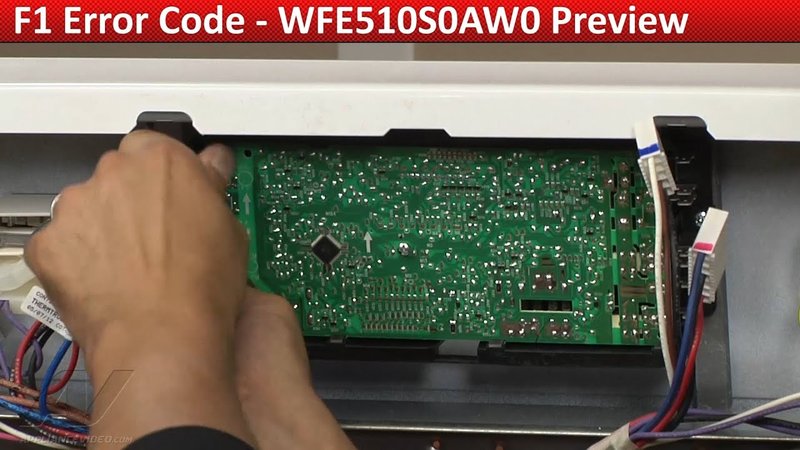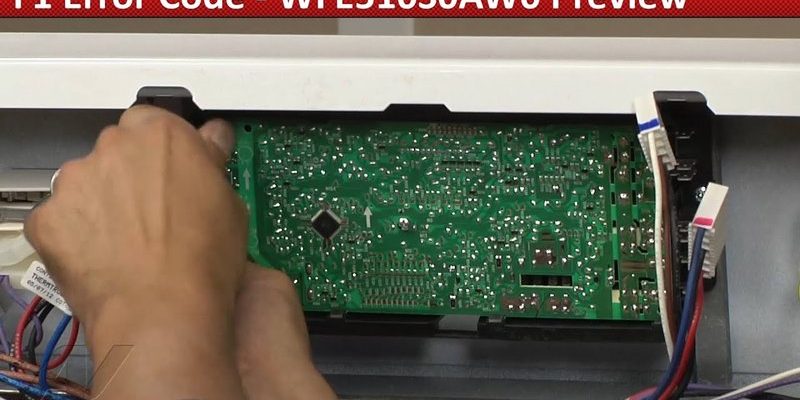
You might be wondering if seeing the F1 error code on your oven means you’ll need to call in a handyman or if it’s something you can handle yourself. Here’s the deal: While it’s definitely a heads-up that your oven is experiencing a little hiccup, understanding what it actually means is the key to deciding your next steps. This code isn’t as complex as it seems, and with a bit of guidance, you’ll be able to tackle it or know when to reach out for professional help. Let’s dive in and uncover what this error code is all about.
Understanding the Whirlpool F1 Error Code
The F1 error code on Whirlpool ovens is like a distress signal. It’s your appliance’s way of saying, “Hey, something’s not working right here, and I need your attention!” Specifically, this code usually points to a problem with the electronic oven control (EOC) or the touchpad. Think of it like the brain of your oven is having a bit of a headache. This can be due to a faulty sensor or a glitch in the control panel.
Imagine the control panel as a traffic controller for your oven’s operations. It’s responsible for communicating and ensuring that each part of the oven does its job when required. When F1 appears, it indicates a miscommunication or failure between the touchpad and the EOC. Like trying to complete a puzzle with a missing piece, some functions might not perform as expected until this problem is resolved.
You might be thinking, “Alright, so it sounds complicated—how do I fix it?” While the error could be serious, it might also be a temporary glitch. Before jumping to conclusions, it’s worth trying a simple reset. Turn off your oven at the breaker for a few minutes, and then turn it back on. This can sometimes clear the error if it was just a minor hiccup in the system. However, if the code persists, further investigation is needed.
Common Causes of the F1 Error Code
When it comes to identifying what causes the F1 error code, there are a few usual suspects. One common cause could be a defective touchpad. Over time, the touchpad might become worn out or dirty, leading to poor contact with the EOC. Imagine it like a worn-out button on an old remote control—sometimes it works, and sometimes it doesn’t.
Another culprit can be the electronic oven control board itself. This component could be malfunctioning due to age, electrical surges, or other environmental factors like humidity. Much like how our electronics can act up on the worst weather days, your oven’s EOC might be experiencing similar stressors.
For those who might have experienced a power surge or outage recently, the F1 error could be attributed to a disruption in power. Sudden changes or interruptions in the power supply can cause the control board to misbehave. So, if your F1 error code appeared after a stormy night, there’s a clue.
How to Address and Fix the F1 Error Code
Okay, now that we know what might be causing the F1 error code, let’s talk about what you can do about it. First, try resetting the oven as mentioned earlier. This is the simplest step and can resolve the issue if it’s just a temporary glitch.
If the problem persists, inspect the touchpad and control board for any visible signs of damage or wear. This might require some careful dismantling of the control panel, so ensure the power is completely off before attempting any checks. You wouldn’t want to tinker with the electronics without taking precautions!
Should you find any damage, replacing the faulty component is often the best course of action. However, this might require professional assistance, especially if you’re not comfortable with electrical repairs. It’s like having a toothache—you could Google remedies, but sometimes a dentist is the best call. Similarly, having a technician examine and replace parts ensures the job is done safely and correctly.
Preventing Future F1 Errors
Prevention is often better than cure, and the same goes for your trusty Whirlpool oven. Regular maintenance can go a long way in keeping those pesky error codes at bay. Try to keep the control panel clean and free from moisture since these factors can contribute to wear and tear over time.
Consider installing a surge protector for your oven, especially if your area is prone to electrical storms or fluctuations. This can safeguard against the kind of electrical havoc that leads to error codes like F1. It’s a small investment that offers peace of mind.
Lastly, pay attention to your appliance. If you notice any unusual behavior or performance issues, don’t wait for an error code to appear. Addressing these problems early can prevent them from escalating into more serious issues, saving you both time and money in the long run.
By staying informed and proactive, you can keep your Whirlpool oven running smoothly and efficiently, ensuring many delicious meals to come! If you ever find yourself puzzled by error codes or appliance issues, remember you’re not alone—there’s always a solution waiting to be discovered.
